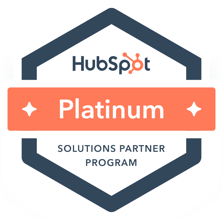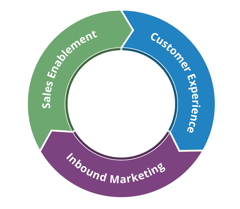 Many people have heard about inbound marketing and the many facets that make up a comprehensive inbound marketing program. There are a variety of components to creating a successful inbound marketing campaign, including content creation & offer development, search engine optimization, blogging, social media promotion, lead nurturing, and analytics.
Many people have heard about inbound marketing and the many facets that make up a comprehensive inbound marketing program. There are a variety of components to creating a successful inbound marketing campaign, including content creation & offer development, search engine optimization, blogging, social media promotion, lead nurturing, and analytics.
While that may seem like a lot to take on, it becomes much more manageable and sustainable if you consider each piece of content as its own integrated inbound marketing campaign. Each separate part of your inbound marketing plan needs to work together to help your content gain the most traction online. If you only focus on one or two of these items, the reach of your campaign will be far less than it would be as an integrated inbound campaign.
Let's walk through the 6 steps to effectively
maximize your integrated inbound marketing campaign.
Step 1: Content Development: Content can be anything from a video, blog post, whitepaper, case study, podcast, webinar, and more. Content that is valuable to your prospects or customers is worth promoting. While thinking of your content, please make sure it is in line with your buyer personas and that you reach each part of the sales and marketing funnel (top of the funnel, middle of the funnel, and bottom of the funnel). This will ensure that you are providing the right content at the right place and at the right time.
Step 2: Search Engine Optimization: When creating your content, whether it is your blog post, a landing page, information about a video you recently recorded, and more, you need to ensure you are optimizing it for search engines. If it's optimized for search, it will be found by many people. It would be best to define the keywords that will resonate with your audience and what they are searching for online. This is typically a "long-tail keyword," which is four or more words in length and is very specific to what the user is searching online. You want to find keywords that allow you to rank on the first page of search engines while not making the difficulty too high that it isn't attainable (especially if you have a relatively new website).
Step 3: Blogging: The blogging step is easy if your content is a blog article. But let's take something more complex. For example, if you have a video that you are promoting, you can cross-promote this on your blog. For your blog article, write a brief introduction to the video and give some teasers to your audience about what they will see when they view the video. This also helps to get the search engine optimization element behind your video. You can either host the video directly on your blog or lead people to an interior page of the website to view the full video. Blogging should be an integral part of all of your inbound marketing efforts.
Step 4: Social Media: Social media marketing is crucial to expanding the reach of your content. While the blog is essential for capturing reach through search engines, social media expands your reach to your followers online. By promoting your content on social media, you are giving your followers direct access to promote your content and share it with their colleagues or friends. This is what can provide you with a significant amount of traction in your social media channels. You can also consider boosting your content through paid social advertising to get your new content out to an even wider audience.
Step 5: Lead Nurturing: Lead nurturing is a more sophisticated form of email marketing. While email marketing is great for newsletters or one-time campaigns, lead nurturing allows you to customize content based on an individual's interaction on your website. For example, if someone downloads a video you created, you can send them an automated email to check out a related case study. Once they download that case study and are further through your sales funnel, you can send them to a page to schedule a consultation with a sales rep. Lead nurturing allows you to stay in front of your prospect while delivering the right content at the right place and at the right time.
Step 6: Analyze the Data: We all know that some campaigns work and others do not. The beauty of inbound marketing is that you can effectively track and measure your results to see what is working and what needs to improve - in real time. Make sure you use a system that allows you to monitor your results to have a complete closed-loop marketing campaign. This will enable you to keep things working that are successful and modify ones that aren't bringing you the greatest benefit.
You can see there is quite a bit that goes into an inbound marketing campaign, but once you master these steps, it will become more manageable and sustainable for you to think of this process for each piece of content that you create. Not only will this drive more website traffic and leads, but it will also help you to convert more customers for your business.
Need help getting started? We invite you to speak with one of our inbound marketing experts today.



__Square.png?width=250&height=250&name=Marketing_Hub_(1)__Square.png)




.png?width=250&name=diamond-badge-color%20(1).png)
